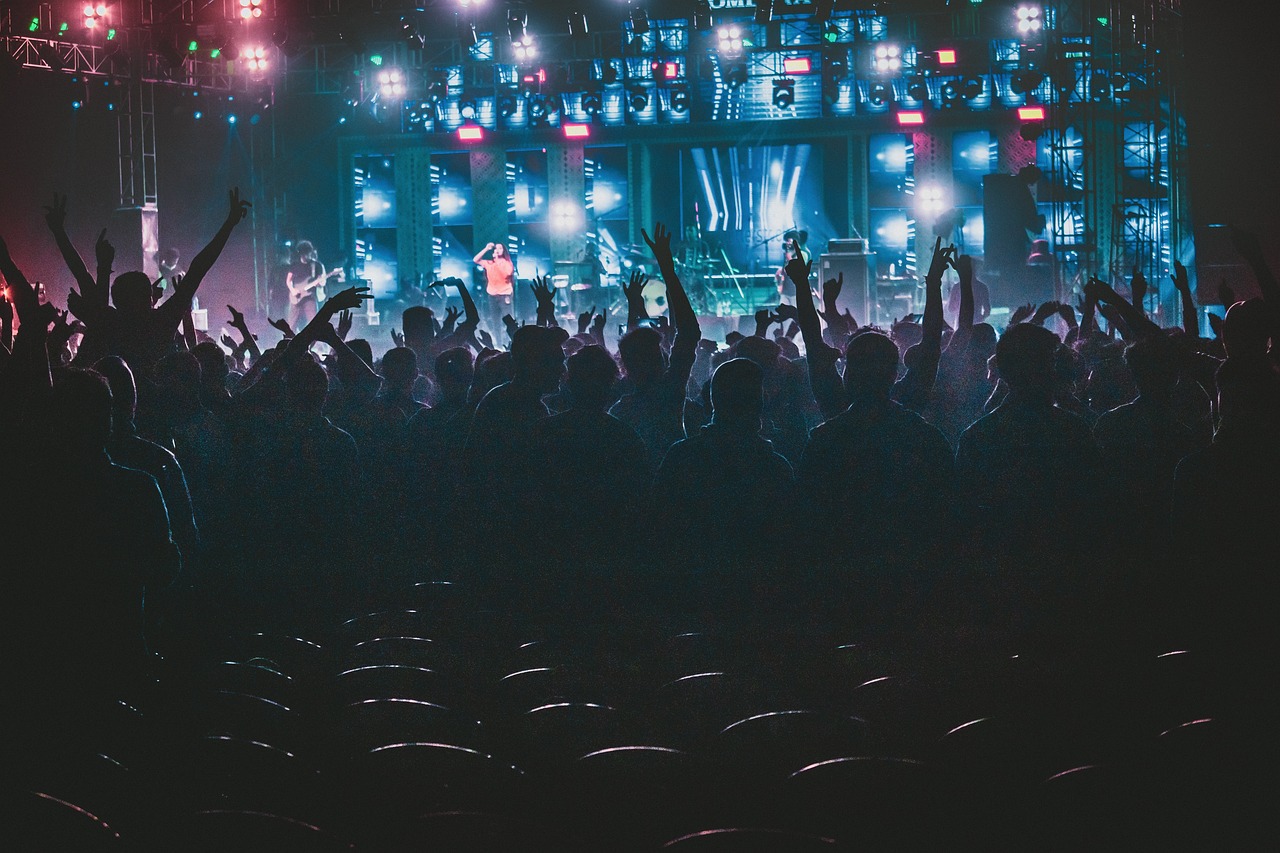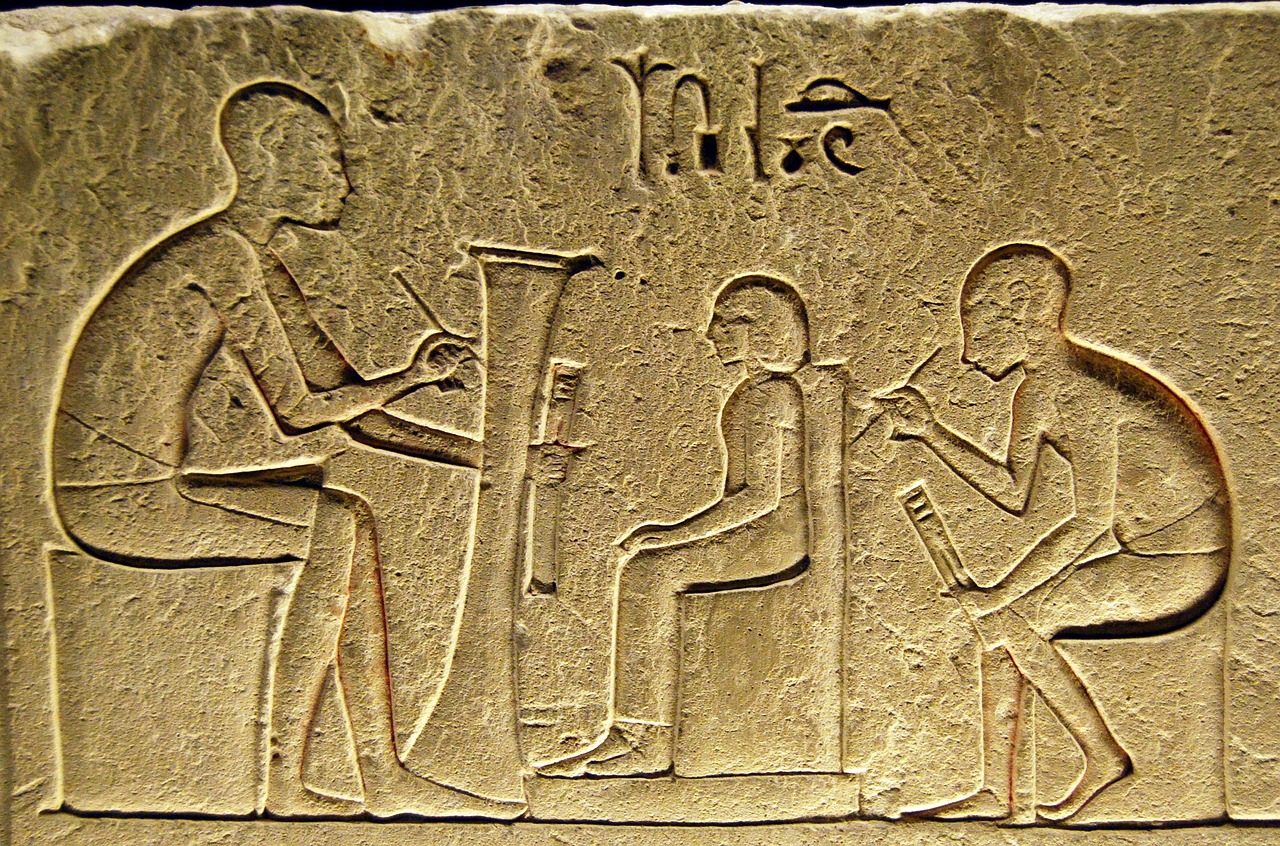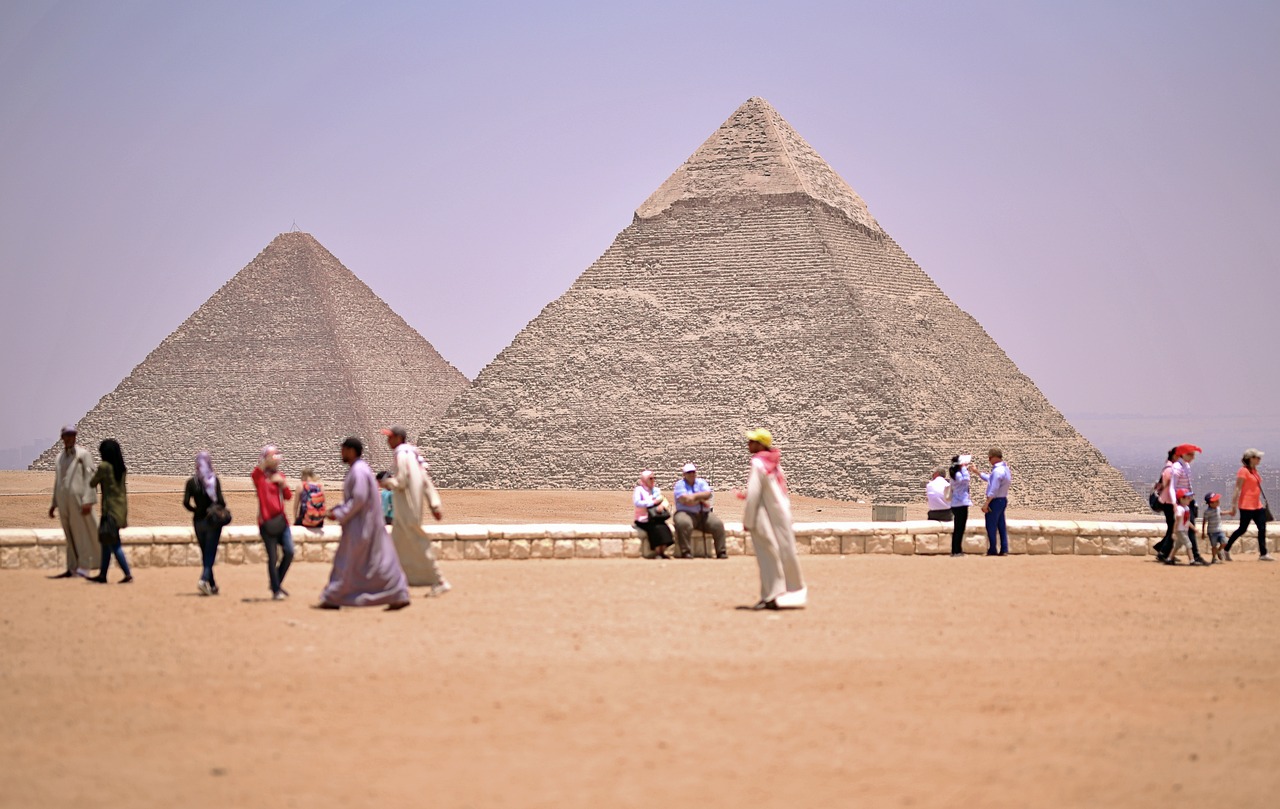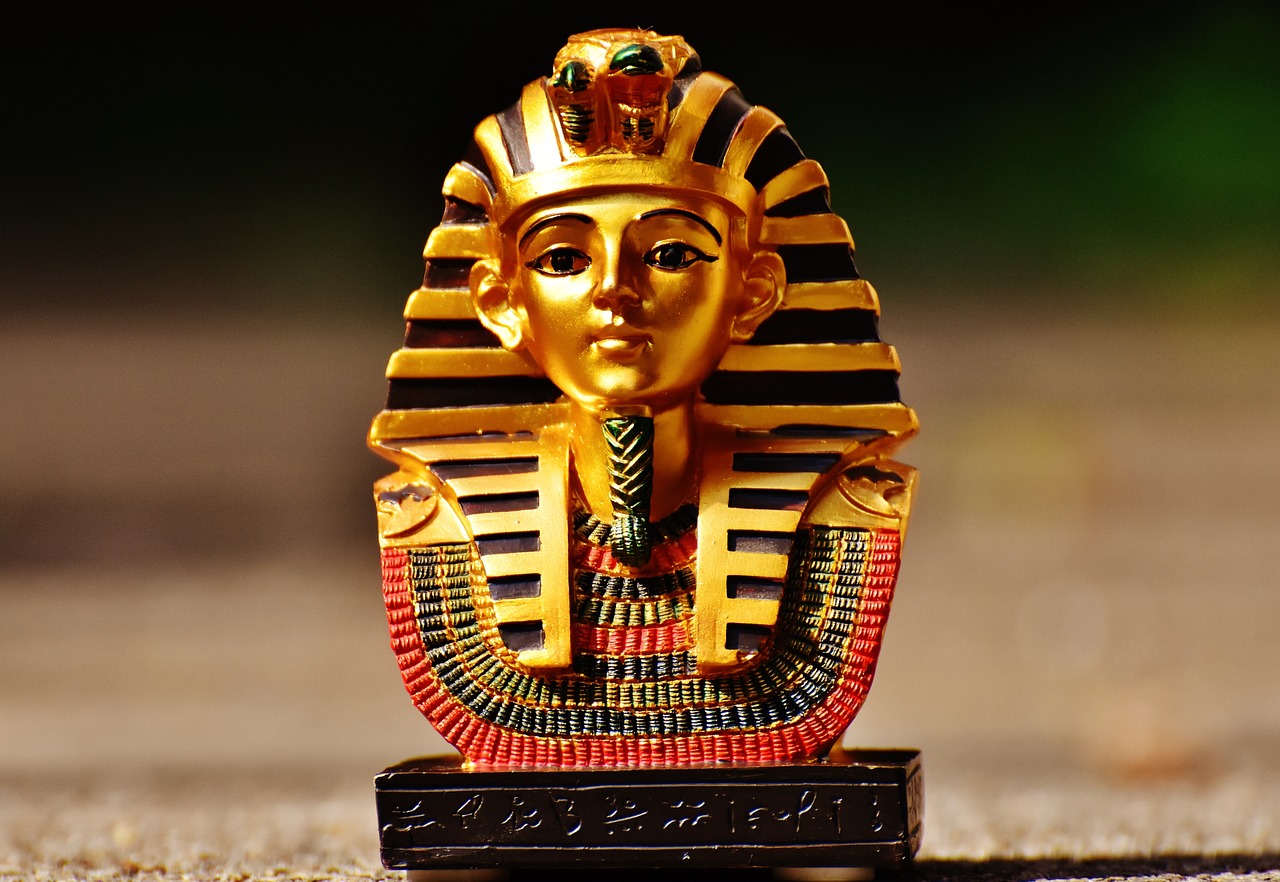The Secrets of Ancient Egyptian Music and Dance
Exploring the mysterious world of ancient Egyptian music and dance opens a portal to a time where rhythms and movements intertwined with daily life and sacred rituals. The echoes of melodies played on unique instruments like the sistrum, harp, and flute still resonate through the sands of time, carrying with them the cultural heritage and spiritual essence of a civilization shrouded in enigma.
Ancient Egyptian music and dance were not mere forms of entertainment but pillars of society, reflecting the values, beliefs, and traditions of a civilization deeply rooted in spirituality and symbolism. Every note played and every step danced held significance beyond the surface, weaving a tapestry of meaning that connected the earthly realm with the divine.
The sistrum, a sacred instrument adorned with symbols and carried in religious ceremonies, symbolized the eternal rhythm of the universe. Its jingling sound was believed to invoke the presence of deities and ward off evil spirits, making it an indispensable tool in religious rituals and processions.
On the other hand, the harp, often associated with the gods and goddesses of ancient Egypt, transcended the boundaries of earthly existence. Its ethereal melodies were believed to bridge the gap between the mortal realm and the afterlife, accompanying souls on their journey to the realm of Osiris, the god of the dead.
In the realm of religious ceremonies, music and dance played a central role in invoking the blessings of the gods and honoring the departed. Elaborate choreographies and symbolic gestures infused ancient Egyptian dance with a language of its own, telling stories of creation, myth, and the eternal cycle of life and death.
Beyond the sacred precincts, music and dance permeated the daily lives of ancient Egyptians, from the bustling streets of Thebes to the serene banks of the Nile. Whether in moments of celebration, labor, or leisure, the rhythms of music and the movements of dance brought communities together, fostering a sense of unity and joy.
The legacy of ancient Egyptian music and dance continues to inspire artists and scholars around the world, sparking a revival of interest in preserving these ancient art forms. As we unravel the secrets of this mystical world, we uncover not just a glimpse of the past but a timeless expression of human creativity and spirituality.

Cultural Significance of Music and Dance
Exploring the fascinating world of music and dance in ancient Egypt, uncovering the cultural significance, instruments used, and the role of music and dance in religious ceremonies and daily life.
Music and dance held a profound cultural significance in ancient Egypt, permeating every aspect of society with their melodies and movements. These artistic expressions were not merely forms of entertainment but served as powerful conduits for conveying societal values, spiritual beliefs, and traditional customs. The rhythms of music and the elegance of dance were intricately woven into the fabric of daily life, reflecting the essence of Egyptian civilization.
Through music and dance, ancient Egyptians communicated stories of their heritage, celebrated victories, and mourned losses. These art forms were a language in themselves, speaking volumes about the people's connection to the divine, their reverence for nature, and their profound understanding of the human experience. Whether in grand temples or humble homes, the echoes of music and the grace of dance reverberated, uniting communities and honoring their shared history.
Moreover, music and dance served as a means of cultural preservation, ensuring that traditions were passed down through generations. Each melody played and each step danced carried the weight of centuries of wisdom and artistry, embodying the collective memory of a civilization that thrived along the banks of the Nile. The cultural significance of music and dance in ancient Egypt transcended mere entertainment, becoming sacred expressions of identity and heritage.
Discovering the unique musical instruments such as the sistrum, harp, and flute that were commonly used in ancient Egyptian music performances.
Exploring the religious and ceremonial importance of the sistrum in ancient Egyptian music, its design, and symbolic significance.
Unraveling the mythological connections and cultural symbolism associated with the harp in ancient Egyptian music and its role in entertainment and religious rituals.
Investigating how music and dance were essential components of religious rituals and ceremonies in ancient Egypt, invoking gods and honoring the deceased.
Analyzing the intricate movements, gestures, and symbolic meanings embedded in ancient Egyptian dance forms, highlighting their ritualistic and storytelling elements.
Exploring how music and dance permeated various aspects of daily life in ancient Egypt, from entertainment and social gatherings to labor and celebrations.
Reflecting on the enduring legacy of ancient Egyptian music and dance, their influence on modern arts, and efforts to preserve and revive these ancient art forms.

Instruments Used in Ancient Egyptian Music
Ancient Egyptian music was rich and diverse, accompanied by a variety of unique instruments that added depth and meaning to the melodies played. Among the instruments used in ancient Egyptian music, the sistrum, harp, and flute stand out as prominent examples of the musical heritage of this civilization. Each instrument held its own significance and played a crucial role in the musical performances that were an integral part of ancient Egyptian culture.
The sistrum, a sacred instrument in ancient Egypt, was not only a musical tool but also a symbol of religious devotion and ceremonial significance. Its distinctive shape and jingling sound were believed to invoke the presence of the gods and ward off evil spirits during religious rituals and processions. The sistrum's design, with its looped handle and metal discs, represented the eternal cycle of life and death, making it a powerful emblem of spiritual connection and divine protection.
On the other hand, the harp held a special place in ancient Egyptian mythology and cultural symbolism, often associated with the gods and goddesses who were patrons of music and arts. The melodious tunes produced by the harp were not only a source of entertainment but also played a vital role in religious ceremonies and rituals honoring the deities. Its elegant form and enchanting sound captured the essence of beauty and harmony, making it a revered instrument in the musical repertoire of ancient Egypt.
Additionally, the flute was another popular instrument used in ancient Egyptian music, known for its sweet and soothing tones that added a lyrical quality to musical compositions. The flute's simplicity and portability made it a versatile instrument that could be played in various settings, from grand temple ceremonies to intimate gatherings. Its ethereal notes were believed to bridge the earthly realm with the divine, creating a sense of transcendence and spiritual connection through music.

The Sistrum: A Sacred Instrument
The Sistrum holds a revered place in ancient Egyptian music and religious ceremonies. This sacred instrument, typically made of metal and shaped like a key, consists of a handle and a frame with loose metal discs that produce a jingling sound when shaken. The Sistrum was not just a musical tool but also a symbol of religious significance, believed to ward off evil spirits and invoke the protection of the gods.
Used primarily in the worship of the goddess Hathor, the Sistrum was associated with fertility, joy, and music. Its design, with the looped handle and the distinctive shape, represented the eternal cycle of life and death in Egyptian belief. The jingling sound produced by the Sistrum was thought to purify the temple and create a harmonious atmosphere for religious rituals.
During ceremonies and processions, priests and priestesses would shake the Sistrum rhythmically, creating a mesmerizing sound that was believed to resonate with the divine realm. The Sistrum's presence in religious art and hieroglyphics further emphasizes its importance in ancient Egyptian culture, showcasing its role as a powerful symbol of spiritual connection and protection.

The Harp: Instrument of the Gods
The harp holds a revered status in ancient Egyptian culture, often regarded as the "Instrument of the Gods." Its presence in music and religious ceremonies symbolized divine connections and mythological significance. The harp's elegant design and enchanting melodies were believed to bridge the earthly realm with the divine, captivating both mortals and deities alike. In entertainment settings, the harp's ethereal sounds were thought to evoke emotions and transport listeners to a higher spiritual plane, enhancing the experience of music and dance performances.

The Role of Music and Dance in Religious Ceremonies
Exploring the fascinating world of music and dance in ancient Egypt, uncovering the cultural significance, instruments used, and the role of music and dance in religious ceremonies and daily life.
Understanding how music and dance were integral parts of ancient Egyptian culture, reflecting societal values, beliefs, and traditions.
Discovering the unique musical instruments such as the sistrum, harp, and flute that were commonly used in ancient Egyptian music performances.
Exploring the religious and ceremonial importance of the sistrum in ancient Egyptian music, its design, and symbolic significance.
Unraveling the mythological connections and cultural symbolism associated with the harp in ancient Egyptian music and its role in entertainment and religious rituals.
Investigating how music and dance were essential components of religious rituals and ceremonies in ancient Egypt, invoking gods and honoring the deceased. Music and dance played a crucial role in connecting the spiritual realm with the earthly domain, serving as a bridge between the worshippers and the divine. The rhythmic beats and graceful movements were believed to channel the energy of the gods, creating a sacred atmosphere that elevated the participants to a higher spiritual plane.
Analyzing the intricate movements, gestures, and symbolic meanings embedded in ancient Egyptian dance forms, highlighting their ritualistic and storytelling elements.
Exploring how music and dance permeated various aspects of daily life in ancient Egypt, from entertainment and social gatherings to labor and celebrations.
Reflecting on the enduring legacy of ancient Egyptian music and dance, their influence on modern arts, and efforts to preserve and revive these ancient art forms.

Choreography and Symbolism in Ancient Egyptian Dance
When delving into the realm of ancient Egyptian dance, one cannot overlook the intricate choreography and profound symbolism embedded within this art form. Unlike modern dance styles, ancient Egyptian dance was not merely about movement but held deep symbolic meanings and ritualistic significance.
Ancient Egyptian dance was a language in itself, with each gesture and step conveying a specific message or story. The dancers' movements were carefully choreographed to depict narratives from mythology, religious beliefs, and daily life. Every sway of the hips, extension of the arms, or stomp of the feet carried symbolic weight, connecting the dancers with the divine and the earthly realms.
The symbolism in ancient Egyptian dance extended beyond the physical movements to include the dancers' attire, accessories, and even the music accompanying the performance. Each element was meticulously chosen to enhance the storytelling aspect of the dance and evoke specific emotions or invoke spiritual connections.
Moreover, ancient Egyptian dance was not just a form of entertainment but a sacred ritual performed in temples, tombs, and royal courts. The choreography was imbued with religious symbolism, honoring deities, commemorating the deceased, and ensuring the cyclical renewal of life and death.
Through the art of dance, ancient Egyptians communicated their deepest beliefs, celebrated their cultural heritage, and connected with the divine forces that governed their world. The choreography and symbolism in ancient Egyptian dance serve as a testament to the profound spiritual and artistic legacy of this ancient civilization.

Music and Dance in Daily Life
Music and dance were not just reserved for grand ceremonies and religious rituals in ancient Egypt; they also played a significant role in the daily lives of the Egyptian people. From the bustling streets of cities to the serene surroundings of villages, the sounds of music and the sight of dance were ubiquitous, weaving into the fabric of everyday existence. Whether it was the rhythmic beats of drums accompanying workers in the fields or the melodic tunes of flutes enlivening social gatherings, music and dance were inseparable from the daily routines of the ancient Egyptians.
Entertainment was a crucial aspect of Egyptian society, and music and dance were central to providing amusement and joy to the people. Performances by musicians and dancers were a common feature at feasts, banquets, and celebrations, adding a festive atmosphere to various occasions. The skillful movements of dancers and the harmonious melodies of musicians captivated audiences, transporting them to a realm of artistic delight and cultural expression.
Moreover, music and dance served as means of social interaction and communication in ancient Egypt. They provided avenues for individuals to express their emotions, share stories, and forge connections with one another. Through communal dances and musical performances, bonds were strengthened, and a sense of unity and camaraderie was fostered among the members of society.
Additionally, music and dance were integral to certain occupational activities in ancient Egypt. Workers engaged in tasks such as farming, construction, and craftsmanship often accompanied their labor with rhythmic chants and movements, creating a sense of rhythm and coordination that enhanced productivity. The synchronization of work with music and dance not only made the tasks more enjoyable but also instilled a sense of teamwork and harmony among the workers.

Legacy of Ancient Egyptian Music and Dance
The legacy of ancient Egyptian music and dance continues to captivate and inspire people around the world, transcending time and borders. The intricate rhythms, melodious tunes, and graceful movements of ancient Egyptian artistic expressions have left an indelible mark on the cultural landscape. As modern society delves into the rich tapestry of history, the echoes of ancient Egyptian music and dance reverberate through the ages, offering a glimpse into a bygone era of creativity and innovation.
One of the most remarkable aspects of the legacy of ancient Egyptian music and dance is its enduring influence on modern arts and entertainment. From classical compositions to contemporary performances, elements of ancient Egyptian musical traditions can be found woven into the fabric of various artistic expressions. The mesmerizing sounds of the harp, the rhythmic beats of the sistrum, and the haunting melodies of the flute continue to inspire musicians and dancers worldwide, serving as a source of inspiration and creativity.
Efforts to preserve and revive the ancient art forms of Egyptian music and dance are ongoing, with dedicated individuals and organizations working tirelessly to ensure that these cultural treasures are not lost to the sands of time. Through meticulous research, restoration projects, and educational initiatives, the legacy of ancient Egyptian music and dance is being safeguarded for future generations, allowing the beauty and splendor of these ancient art forms to endure.
Frequently Asked Questions
- What role did music and dance play in ancient Egyptian culture?
Music and dance held significant cultural importance in ancient Egypt, serving as expressions of societal values, beliefs, and traditions. They were deeply intertwined with religious ceremonies, daily life activities, and entertainment, reflecting the rich cultural heritage of the civilization.
- Which instruments were commonly used in ancient Egyptian music?
Ancient Egyptian music featured a variety of instruments, including the sistrum, harp, and flute. The sistrum, with its sacred significance, was often used in religious rituals, while the harp, associated with mythological connections, played a vital role in both entertainment and religious settings.
- How were music and dance incorporated into religious ceremonies?
Music and dance were integral components of religious rituals in ancient Egypt, with specific choreography and symbolic meanings embedded in the performances. They were used to invoke deities, honor the deceased, and enhance the spiritual experience of the ceremonies.
- What is the legacy of ancient Egyptian music and dance?
The legacy of ancient Egyptian music and dance continues to influence modern arts and cultural practices. Efforts are ongoing to preserve and revive these ancient art forms, recognizing their enduring impact on the world of music, dance, and storytelling.



















